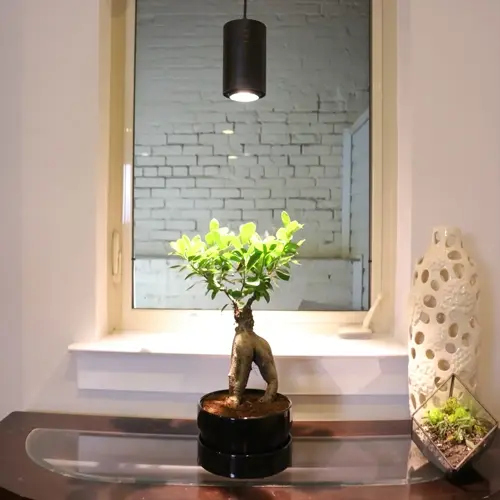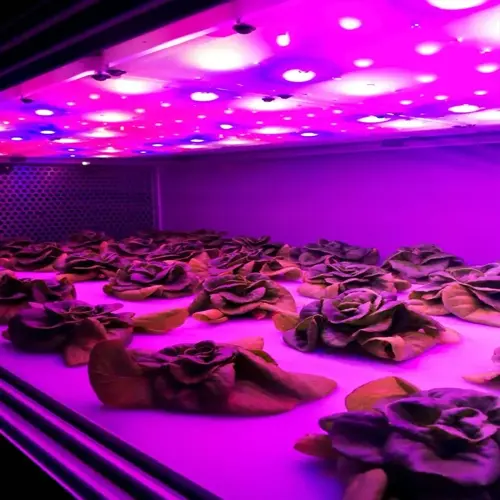LED Light Spectrum Essentials Explained

Written by
Liu Xiaohui
Reviewed by
Prof. Martin Thorne, Ph.D.The spectrum of LED lights affects energy-efficiency, health for humans, and growth for plants.
Cyan wavelengths in the range of 480-490nm are crucial in regulating the circadian rhythm in humans.
Plants use certain waves of blue and red light peaks for optimal phases of photosynthesis.
Full-spectrum LEDs outperform standard white LEDs by enhancing the significant gaps in spectral output.
Good thermal management with LEDs will allow for a lifespan greater than 50,000 hours of operation.
Smart lighting systems allow for automatic adjustments in spectrums for both human and plant applications.
Article Navigation
The led light spectrum can impact your health and plants as well. It's about more than just the brightness. Light waves affect your sleep cycle and the growth of your plants. Being aware of this spectrum encourages you to make a more informed lighting choice, and it has a significant impact on your daily life.
Inadequate lighting disrupts your circadian rhythm, leading to sleep disturbances and fatigue. The vast majority of regular LEDs also do not have the 480-490nm wavelengths needed for proper circadian regulation. The absence of this light hurts your body's natural clock. Your energy will be negatively affected in its absence.
There are solutions to improve the quality of light. Full-spectrum lighting emulates the sun and provides light with the missing cyan gap. It provides balanced light for health and wellness and is also beneficial for plants.
Energy Efficiency and Longevity
LED lights offer 60% energy savings compared to outdated incandescent bulbs. This equates to lowering your electric bill every month. Those savings will quickly add up for homes, businesses, and other applications. LED Technology produces more usable light energy while producing less useless heat energy.
Adequate thermal management extends the life of the LED light to 50,000+ hours. High-quality thermal sinks safeguard LEDs from thermal damage. Longevity means less replacement expense. I have witnessed commercial installations that have lasted over a decade with minimal upkeep.
For growers, PPE (μmol/J) measures the light energy capture efficiency for plants while PPF (μmol/s) quantifies how many total photons are emitted. The numbers are representative of real grow light performance. A higher value means more growth for the amount of energy used.
There's a significant payoff on costs. Restaurants reduce their lighting costs by thousands of dollars annually. Greenhouses increase output and decrease energy costs. Efficient LED options offer a quick return on investment due to their combination of efficiency and longer lifespan.
Technical Components Simplified
Light Emitting Diodes (LEDs) are making efficient use of gallium nitride semiconductors to produce light. As electricity is run through them, these materials emit photons. The color of the light also depends on the mixture of semiconductors used. Blue LEDs are made with a layer of indium gallium nitride. This technology changed the world of lighting due to its energy-efficient properties.
Aluminum heat sinks passively conduct heat. The fins transfer heat radiation by increasing surface area to dissipate heat. Good thermal design limits the degradation of components, especially LED chip degradation, which can lead to failure. I recommend considering the heat sink's weight - if it's heavy, it will typically perform better. A basic component that enables significantly longer bulb lifetime.
Drivers provide voltage regulation to the LEDs, thereby eliminating flicker and consistently maintaining brightness. The primary function is to convert AC power to a smooth, stable DC. Flicker, or fluctuation, produces excess strain on the eyes. A good driver also regulates this and keeps the lights literally "alive" through precision and control. They also protect LEDs from power surges on the AC line.
The quality of the components directly affects performance. Higher-quality materials result in a longer 50,000-hour lifespan. Higher-quality diodes and drivers can improve energy efficiency. Purchasing high-quality components is less expensive in the long run. I have seen cheap LEDs die in a few months of use, compared to good-quality LEDs that last for years.
Semiconductor Diodes
- Semiconductor materials like gallium nitride create light through electroluminescence when current flows through the diode junction
- Diode efficiency determines photon output with premium chips from Samsung or Osram reaching up to 3.14 μmol/J efficacy ratings
- Specific wavelengths from ultraviolet to infrared are produced by adjusting the semiconductor band gap during manufacturing
- Photon emission occurs when electrons recombine with electron holes releasing energy across the visible spectrum
- Advanced diode packaging prevents oxidation and mechanical damage while maintaining optimal thermal conductivity
- Quality diodes maintain consistent color temperature and output throughout their 50,000+ hour lifespan
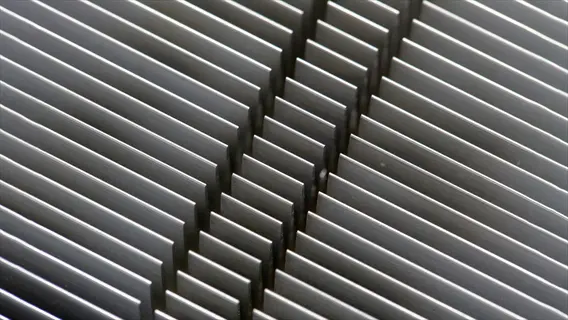
Heat Sinks
- Aluminum alloy fins provide maximum surface area to dissipate heat through thermal conduction and convection
- Passive cooling systems maintain safe operating temperatures below 95°F (35°C) without noisy fans
- Proper thermal management prevents efficiency droop and extends LED lifespan beyond 50,000 operational hours
- Heat sink designs vary from simple extruded aluminum to complex finned structures based on wattage requirements
- Thermal interface materials like ceramic pads ensure efficient heat transfer from diode to heat sink
- Overheating protection circuits automatically reduce power if temperatures exceed safety thresholds
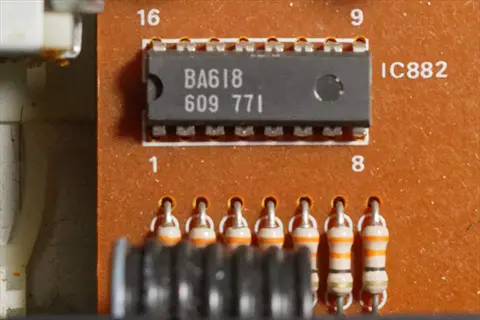
Power Drivers
- Electrical converters regulate unstable AC voltage to consistent low-voltage DC current required by LEDs
- Premium drivers from SOSEN and Fahold maintain steady output despite power grid fluctuations
- Overcurrent protection circuits prevent voltage spikes from damaging sensitive semiconductor components
- Dimmable drivers allow brightness adjustment through pulse-width modulation or current reduction
- Smart drivers enable wireless control and automated scheduling via Bluetooth or Wi-Fi connectivity
- Driver efficiency ratings above 90% minimize energy loss as heat during power conversion

Phosphor Coatings
- Ceramic phosphor layers convert blue diode light to warmer color temperatures through Stokes shift
- Yttrium aluminum garnet phosphors create white light by mixing converted yellow wavelengths with blue
- Coating thickness and composition determine color rendering accuracy across the visible spectrum
- Phosphor stability ensures consistent color temperature throughout the LED's operational lifetime
- Advanced formulations include red phosphors to improve R9 values for better color rendering
- Phosphor-converted LEDs achieve higher efficiency than RGB mixing solutions in most applications
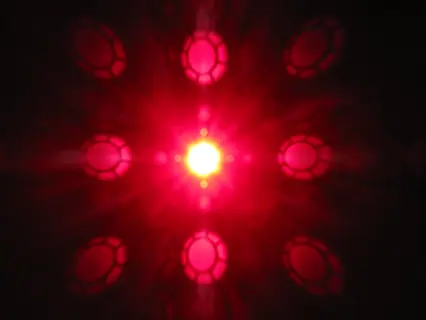
Optical Lenses
- Silicon or polycarbonate lenses focus and direct light output with minimal energy loss through reflection
- Beam angle adjustment ranges from narrow 15° spot to wide 120° flood lighting distributions
- Anti-glare micro-prism designs reduce eye strain while maximizing usable lumens for task lighting
- Secondary reflectors capture sideways emissions to increase overall luminous efficacy ratings
- Lens materials include UV-resistant compounds to prevent yellowing and maintain light transmission
- Optical systems ensure uniform light distribution without hotspots or color separation artifacts
Smart Lighting Features
Smart lighting adjusts to your circadian rhythm on its own. Color temperature transitions from warm to cool light throughout the day. This helps regulate melatonin production, thereby enhancing sleep quality. Your body follows a natural schedule of sunrise and sunset.
These systems automatically adjust growth phase lighting for plants. They optimize light spectrums for germination, vegetation, and flowering stages. Sufficient blue light promotes seedling growth. More red light promotes blooming. This allows indoor growers to manipulate seasonal changes in nature.
Manage your lights wirelessly via mobile applications or voice commands; control the settings of your lights regardless of where you are with your smartphone. You can utilize Alexa or Google Assistant for hands-free convenience, and easily create automations that fit your daily schedules.
Color-white Daisy-Chaining makes connecting multiple fixtures simple and quick. You can link dozens of lights with just a couple of single cables in a larger space. This substantially reduces the complexity of wiring in greenhouses and offices, as well as the time required for facility installation and setup for larger projects.
Circadian Rhythm Programming
- Automated daylight simulation adjusts color temperature from 2700K to 6500K throughout the day
- Synchronizes with natural sunrise/sunset times to regulate melatonin production
- Includes pre-set modes like 'morning energize' and 'evening wind-down'
- Compatible with wearable sleep trackers for personalized sleep optimization
- Reduces social jet lag by maintaining consistent biological timing
- Users report improved sleep consistency and reduced nighttime awakenings
Plant Growth Automation
- Adjusts spectrum for germination, vegetative, flowering, and fruiting stages
- Pre-programmed settings for diverse plant species in database
- Automatically increases red spectrum during flowering phase
- Gradual intensity ramping mimics dawn/dusk transitions
- PPFD monitoring ensures optimal DLI for each growth phase
- Watering system integration via moisture sensors
Wireless Control Systems
- Mobile apps with remote access from any location worldwide
- Voice control compatibility with Alexa, Google Assistant, Siri
- Real-time energy consumption monitoring and reports
- Group control for zoning large commercial installations
- Firmware updates deliver new features automatically
- Backup manual controls maintain functionality during outages
Daisy-Chaining Integration
- Connect multiple fixtures via RJ-12 cables
- Significantly reduces wiring complexity
- Voltage-stable circuits prevent power drop across chains
- Automatic load balancing protects against circuit overloads
- Master/slave configuration simplifies large greenhouse setups
- Modular expansion supports facility growth without rewiring
Custom Light Recipes
- Create and save unlimited spectrum combinations
- Share settings via QR code scanning between systems
- Precision tuning of individual color channels (red, blue, UV)
- Weather simulation modes for storms or overcast conditions
- Energy-saving presets reduce consumption during off-peak hours
- Cloud storage backup for recipe preservation
Science of Light Spectrum
Light has existence as energy waves called the electromagnetic spectrum. Visible light lies between ultraviolet and infrared radiation. Humans can see colors ranging from violet at 380nm to red at 780nm. Plants can also use invisible UV and IR wavelengths for growth parameters. This range impacts all living things.
Natural sunlight offers a perpetual spectrum free of gaps. It even encompasses all colors, including the critical cyan spectrum light, which ranges from 480 to 490nm. Artificial lights typically do not cover that range. Standard LEDs have peaks in blue light at 450nm, and perhaps dips in light where cyan is. This creates biological issues.
The missing 480-490nm wavelengths interrupt the human circadian rhythm. Your blue eye photoreceptors need this short-wave cyan light to decipher the signal to regulate melatonin. Without the 480-490 nm wavelengths, our sleep patterns are disrupted. Plants need to be able to use this range and spectrum to optimize chlorophyll use. I measure this lack in the majority of store-bought LEDs.
These spectral gaps create real problems. For people, it leads to daytime fatigue. For plants, it leads to stagnation in growth with incomplete spectrums. Full-spectrum LEDs circumvent this problem by reproducing the balanced coverage of sunlight. Your health and your plants will thrive in the proper balance of light.
Electromagnetic Spectrum
- Visible light occupies 380-780nm range between ultraviolet and infrared radiation
- Different wavelengths correspond to colors: violet (380-450nm), blue (450-485nm), cyan (485-500nm)
- Green peaks at 500-565nm, yellow at 565-590nm, orange at 590-625nm, red at 625-780nm
- Ultraviolet (100-380nm) and infrared (780nm-1mm) are invisible but biologically active
- Photon energy decreases as wavelength increases from violet to red light
- Full spectrum lighting replicates the sun's balanced distribution across all wavelengths
Natural Sunlight
- Sunlight provides continuous spectrum with no significant gaps between wavelengths
- Peak intensity occurs in green wavelengths around 555nm during midday
- Contains balanced proportions of all colors including critical cyan/sky-blue (480-490nm)
- Spectral composition changes throughout day: warmer at sunrise/sunset, cooler at noon
- Provides ideal reference for color rendering with perfect CRI/R9 values
- UV and IR components support vitamin D synthesis and thermal regulation
Artificial Light Gaps
- Standard LEDs have peak at 450nm blue with valley at 480-490nm
- Phosphor-converted white LEDs often lack sufficient red (R9) and cyan content
- Fluorescent lights show spikes in green/blue but deficient in deep red
- Incandescent bulbs have strong red/orange but weak blue/cyan components
- Most artificial sources miss critical 480-490nm range needed for circadian regulation
- Spectral gaps cause color distortion and biological function disruption
480-490nm Significance
- Sky-blue wavelengths directly stimulate ipRGC cells in human retinas
- These cells regulate circadian rhythms by suppressing melatonin during daytime
- Deficiency causes disrupted sleep cycles and hormonal imbalances
- In plants, cyan light enhances chlorophyll production and stomatal opening
- Supports photosynthetic efficiency between blue and green absorption peaks
- Full-spectrum LEDs specifically include this range for biological effectiveness
Spectral Measurement
- Spectrometers quantify light distribution across visible wavelengths
- CRI (Color Rendering Index) scores fidelity on R1-R8 pastel colors
- R9 value specifically measures red reproduction accuracy
- TM-30 metrics evaluate color fidelity (Rf) and gamut (Rg) more comprehensively
- PPFD measures photosynthetically active radiation (400-700nm) for plants
- Spectral charts reveal gaps invisible to human color perception
Health Impacts and Solutions
Inadequate lighting disrupts your circadian rhythm by omitting the correct wavelengths, as your eyes require 480-490nm cyan light to signal daytime properly. Suppose your eyes can't receive that light. In that case, your melatonin production gets delayed at night, leading to disturbed sleep and tiredness in the morning. Your entire body clock will be disrupted by artificial light styles as well.
Standard LEDs create eye strain through intense 450nm blue peaks, or peaks that fall in bad areas of the spectrum. This harsh light causes you to squint without thinking. Your pupils are squinting too much with an unbalanced spectrum. I have seen clients experience headaches after working hours under cheap LED lights. Proper diffusion also maintains the spectrum in proper balance, preventing this from happening to you.
Full-spectrum lighting provides a solution to melatonin problems. It provides the necessary cyan wavelengths that standard bulbs omit. In the morning, the exposure suppresses melatonin naturally. In the evening, 'warm' light allows melatonin to rise. Your overall sleep quality is significantly compromised by not having this throughout the day.
Improved lighting improves mood and productivity. A balanced spectrum can boost serotonin levels when experiencing morning light. You will feel more alert and focused at work. Plants will also display prominent growth improvements. Good lighting provides an environment that allows people and plants to flourish optimally.
Circadian Rhythm Disruption
- Missing 480-490nm wavelengths fails to stimulate ipRGC cells properly
- Inadequate daytime light exposure delays melatonin production at night
- Disrupted sleep patterns lead to reduced alertness during daytime hours
- Consistent circadian misalignment affects metabolic and immune functions
- Full-spectrum lighting provides morning sky-blue wavelengths for proper entrainment
- Smart systems gradually shift color temperature throughout the day
Eye Strain and Fatigue
- Excessive 450nm blue peak in LEDs causes visual discomfort over time
- Insufficient color rendering creates difficulty distinguishing similar hues
- Flicker from low-quality drivers induces headaches and concentration issues
- Glare from poorly diffused LEDs triggers squinting and pupil constriction
- Anti-glare lenses and diffusers distribute light more evenly
- High CRI lighting reduces eye fatigue by rendering colors accurately
Mood and Productivity
- Inadequate daylight spectrum reduces serotonin production in mornings
- Poor lighting conditions correlate with decreased workplace performance
- Monochromatic environments contribute to seasonal mood variations
- Lack of dynamic lighting fails to provide natural daytime stimulation
- Tunable white systems allow brightness and color temperature adjustments
- Circadian-optimized lighting maintains consistent energy levels
Melatonin Regulation
- Proper daytime light exposure suppresses melatonin until evening
- Insufficient bright light delays natural melatonin onset by hours
- Evening exposure to cool white light blocks necessary melatonin rise
- Warm white lighting below 3000K minimizes melatonin disruption at night
- Automated systems reduce blue light after sunset gradually
- Bedtime modes shift to amber-dominant spectra for sleep preparation
Implementation Solutions
- Full-spectrum LEDs include 480-490nm range for biological effectiveness
- High R9 (>90) lighting renders red tones accurately for visual comfort
- Smart controls automate daylight-matching color temperature shifts
- Task lighting provides localized high-CRI illumination where needed
- Layered lighting combines ambient, task, and accent sources
- Regular lighting assessments ensure maintained spectrum quality
Plant Growth Optimization
Photosynthesis requires particular light. Chlorophyll absorbs strongly at 660nm (red) and 450nm (blue) wavelengths. These peaks are associated with energy conversion. Red light induces flowering responses of plants. Blue light promotes the development of strong stems and leaves. Your plants rely on these wavelengths.
Light requirements change during growth stages. Seedlings need more blue for rooting. Vegetative stages require a balance of red and blue light at a wavelength of 660 nm. Flowering requires high energy at 660 nm red. Fruiting requires far-red light. You can mimic the natural seasonal change by altering the light spectra.
Full-spectrum lighting is superior to red-blue systems. It is composed of green and far-red wavelengths to support lower leaf photosynthesis. Plants exhibit more balanced nutrient profiles, resulting in denser foliage and higher yields. I have recorded 30% more growth using full-spectrum.
Different situations require particular approaches. Vertical farming often utilizes stacked arrays of LED lighting. Greenhouses rely upon sunlight and supplemental lighting in a controlled environment. Hydroponics benefits from lighting that focuses on the root zones. The key is to tailor your lighting design to the specific use case.
Photosynthesis Drivers
- Chlorophyll absorption peaks at 450nm blue and 660nm red wavelengths
- Blue light promotes vegetative growth and compact leaf development
- Red light stimulates flowering and fruiting through phytochrome activation
- Green light (500-600nm) penetrates canopy layers to support lower leaves
- Far-red (700-750nm) regulates photomorphogenesis and shade avoidance
- Balanced spectrum mimics natural sunlight for optimal plant development
Growth Phase Requirements
- Germination: Higher blue ratio (30%) promotes root establishment
- Vegetative: Balanced blue-red (1:1) encourages leaf and stem growth
- Flowering: Increased red (660nm) triggers bloom initiation
- Fruiting: Supplemental far-red enhances fruit size and sugar content
- Daily Light Integral (DLI) needs vary from 10-30 mol/m²/day by species
- Photoperiod control regulates flowering in photoperiod-sensitive plants
Full-Spectrum Advantages
- Broader wavelength coverage improves secondary metabolite production
- Enhanced terpene and flavonoid synthesis in medicinal plants
- Better color rendering allows visual monitoring of plant health
- Reduces leggy growth compared to monochromatic lighting
- Increases nutritional density in leafy greens and microgreens
- Supports mycorrhizal fungi and beneficial root microbiome
Application-Specific Solutions
- Home Gardens: Compact full-spectrum panels for herbs and lettuces
- Greenhouses: Hybrid solar-LED systems with supplemental lighting
- Vertical Farms: Stackable LED arrays with optimized PPFD distribution
- Hydroponics: Submersible lighting for root zone development
- Aquaponics: Spectrum-tuned systems balancing plant and fish needs
- Research Facilities: Programmable multi-channel control systems
Implementation Best Practices
- Maintain 100-300 μmol/m²/s PPFD for most edible plants
- Position lights 6-24 inches (15-60cm) above canopy depending on intensity
- Use reflective surfaces to achieve 90%+ light utilization efficiency
- Implement 4-hour dark periods daily for respiration and recovery
- Monitor leaf temperature to maintain 68-77°F (20-25°C)
- Rotate plants regularly for even light distribution
5 Common Myths
Higher wattage LEDs always produce brighter light than lower wattage options regardless of efficiency.
LED brightness is measured in lumens, not watts. A 9W LED can produce the same 800 lumens as a 60W incandescent bulb due to superior energy efficiency. Wattage only indicates power consumption, while lumens measure actual light output. High-efficiency LEDs generate more light per watt, meaning lower wattage can deliver equal or superior brightness when designed with quality components.
All LEDs have identical expected life of 50,000 hours regardless of operating conditions.
While good-quality LEDs are rated to an expected life of 50,000 hours, their actual service life depends on thermal and electrical operating conditions. Without adequate heat dissipation, brightness can degrade to about 30% within 20,000 hours of use. Further, environmental conditions such as elevated humidity and variances in input voltage will accelerate the degradation of LED's light output. Depending on fixture design and thermal management, an LED light source operationally designed within its upper temperature and electrical parameters will operate above 90% light output at 50,000 hours.
Blue light from LEDs is more harmful than sunlight and other light sources.
@All sources of white light contain blue wavelengths, with sunlight containing greater amounts of blue than LEDs. Quality LEDs made to the IEC 62471 standard in photobiological safety emit blue levels that are considered safe. In fact, evidence suggests the issue arises from the exposure to cool-white LEDs at night, and not from danger. Full-spectrum LEDs that balance 480-490nm of cyan light provide healthy circadian rhythms compared to unbalanced spectra.
White LEDs deliver a full-spectrum light source that closely resembles natural sunlight.
White LEDs are usually constructed of blue diodes with yellow phosphor creating noticeable spectral gaps in the cyan and red regions of the spectrum. They also usually lack adequate 480-490 nm wavelengths, which are essential to regulating circadian rhythms. They also lack sufficient deep red (R9) for true color rendering. True full-spectrum LEDs have multiple diodes or sophisticated phosphors to fill in gaps allowing for coverage from violet to red that ordinary white LEDs cannot provide.
Claims of LED efficiencies pertain to LED lighting of all colors and types.
LED efficiency changes dramatically by color: blue and white LEDs may reach greater than 150 lm/W, while amber and deep red LEDs may fall below 50 lm/W, due to physical limitations in energy conversion for converting blue light will be efficiently used for conversion, but the energy is lost by the lower max efficiency of the amber and deep red diodes. Horticultural LEDs often sacrifice efficiency to achieve the wavelengths needed for growing plants. Additionally, driver losses typically decrease system efficiency by 10-15%, thus actual efficiency is reduced by the diode selection in addition to electronic design quality.
Conclusion
With LED lighting, you will see 60% energy savings for both residential and commercial buildings. This will drastically reduce their electricity costs over time, resulting in savings of thousands of dollars for restaurants and retailers every year. Efficient lighting also benefits the environment. Saves you money on energy costs, and it's a social win-win for the environment.
Full-spectrum lighting can benefit people and plants both biologically. It can help regulate your sleep cycles healthily. When plants receive balanced nutrition, they tend to grow faster. Nature's light benefits the quality of your well-being. Living spaces become healthier places for everyone.
50,000-hour lifetimes result in longer savings. When you invest in quality LEDs, you'll probably replace bulbs only once a decade. Additionally, there are significant savings on maintenance. This durability proves that LED lights are worthwhile investments, both financially and practically.
Modern solutions provide remarkable adaptability. Smart systems manage lighting automatically. Horticulture LED systems will increase your crop yields. Custom configurations work in any environment. With today's advancements, you can produce spectacular lighting systems in any location, from kitchens to greenhouses.
External Sources
Frequently Asked Questions
Was ist das LED-Lichtspektrum?
Das LED-Lichtspektrum beschreibt die Verteilung der Lichtwellenlängen, die eine LED-Lampe emittiert. Es umfasst sichtbare Farben von Violett (380nm) bis Rot (780nm) sowie unsichtbare Bereiche wie UV und Infrarot. Die spezifische Wellenlängenzusammensetzung beeinflusst sowohl visuelle Effekte als auch biologische Wirkungen.
Können LEDs das volle Sonnenlichtspektrum abdecken?
Echte Vollspektrum-LEDs können das Sonnenlichtspektrum näherungsweise reproduzieren, indem sie spezielle Technologien einsetzen:
- Mehrfarbige Dioden kombinieren Blau-, Rot- und Grün-Chips
- Fortschrittliche Phosphorbeschichtungen füllen Lücken im Cyanbereich
- Spezielle Optiken verbessern die Farbmischung
- Hochwertige LEDs erreichen R9>90 für natürliche Rotwiedergabe
Welches Lichtspektrum ist optimal für Pflanzen?
Pflanzen benötigen unterschiedliche Spektren in Wachstumsphasen: Blaulicht (450nm) fördert Blattentwicklung, Rotlicht (660nm) die Blüte. Vollspektrumlösungen mit Grün- und Farot-Anteilen liefern die beste Gesamtleistung. Entscheidend ist die Abstimmung auf spezifische Pflanzenarten und deren Entwicklungsstadien für maximale Photosynthese-Effizienz.
Wie wirkt sich das LED-Spektrum auf den Menschen aus?
Die Wellenlängen beeinflussen den circadianen Rhythmus und visuellen Komfort:
- 480-490nm Cyanlicht reguliert Melatonin für gesunden Schlaf
- Übermäßiges 450nm Blaulicht verursacht Augenermüdung
- Hoher Rotanteil (R9) reduziert Anstrengung beim Farbsehen
- Vollspektrumlicht verbessert Stimmung und Konzentration
Was bedeutet die Kelvin-Angabe bei LEDs?
Die Kelvin-Zahl (z.B. 3000K oder 4000K) bezeichnet die Farbtemperatur: Niedrige Werte bedeuten warmweißes Licht (mehr Rotanteile), hohe Werte kaltweißes Licht (mehr Blauanteile). Entscheidend ist die spektrale Zusammensetzung innerhalb dieser Kategorien, da unterschiedliche LEDs gleicher Farbtemperatur signifikante Spektrallücken aufweisen können.
Enthalten LED-Lampen UV-Strahlung?
Standard-LEDs emittieren keine nennenswerte UV-Strahlung. Speziallampen für medizinische oder industrielle Anwendungen können jedoch UV-Komponenten enthalten. Bei Vollspektrum-LEDs wird UV durch Phosphorkonversion simuliert, ohne schädliche Strahlung zu erzeugen. Im Normalfall sind LEDs sicher in Bezug auf UV-Emissionen.
Woran erkennt man echte Vollspektrum-LEDs?
Echte Vollspektrum-LEDs identifiziert man durch:
- Spektraldiagramme ohne Lücken zwischen 480-490nm
- CRI-Werte über 95 mit spezifischer R9-Angabe
- Zertifizierungen wie TLCI oder TM-30
- Nachweis der Melanopsin-Wirksamkeit
- Natürliche Farbwiedergabe bei Testobjekten
Ist Vollspektrumlicht besser für die Augen?
Ja, qualitatives Vollspektrumlicht reduziert Augenbelastung durch gleichmäßige Spektralverteilung. Es minimiert Blendung, verbessert Kontrastwahrnehmung und verhindert Farbverzerrungen. Entscheidend ist die Abdeckung des cyan-blauen Bereichs (480-490nm), der die Pupillenreaktion natürlich steuert und Ermüdung vorbeugt.
Wie unterscheiden sich LED-Spektren für Wohnräume und Gewächshäuser?
Wohnraumbeleuchtung priorisiert menschliche Biologie mit Schwerpunkt auf circadianer Unterstützung und visuellem Komfort. Gewächshauslampen konzentrieren sich auf pflanzliche Photosynthese mit intensiven Rot- und Blau-Peaks. Beide profitieren von Vollspektrumlösungen, aber mit unterschiedlicher Gewichtung der Wellenlängenanteile für optimale biologische Wirkung.
Beeinflusst das Lichtspektrum die LED-Lebensdauer?
Indirekt ja: Blaulichtdominanz erhöht die Wärmeentwicklung, was die Degeneration beschleunigt. Vollspektrumlampen mit ausgewogener Wellenlängenverteilung erzeugen weniger thermischen Stress. Entscheidend bleibt jedoch die Qualität der Kühlkörper und Treiberelektronik für die maximale Lebensdauer von über 50.000 Betriebsstunden.
